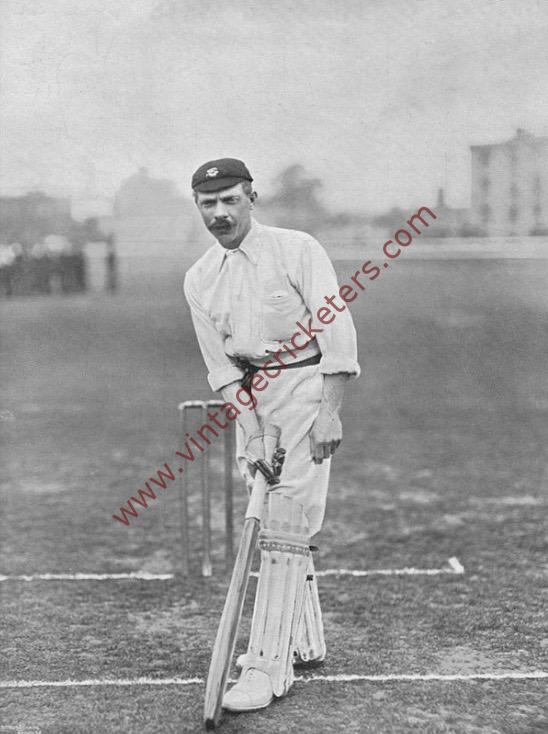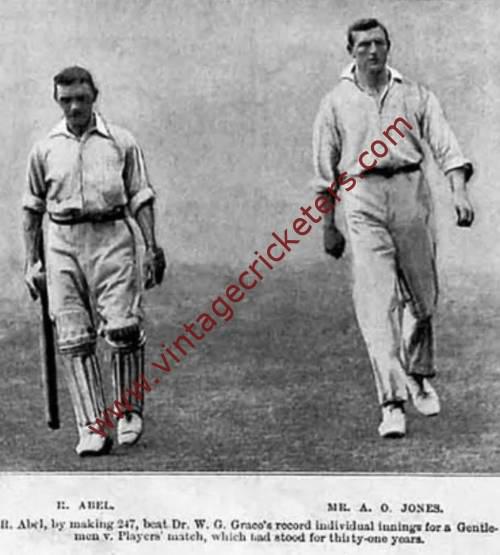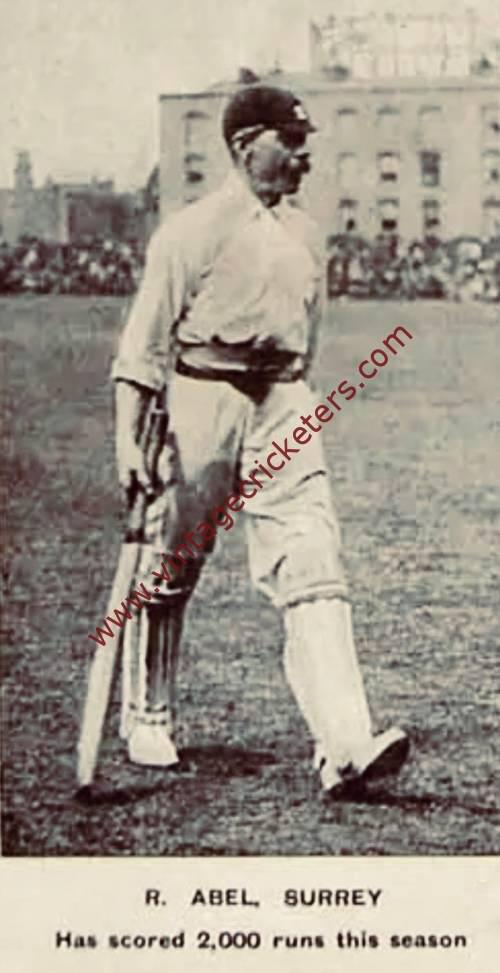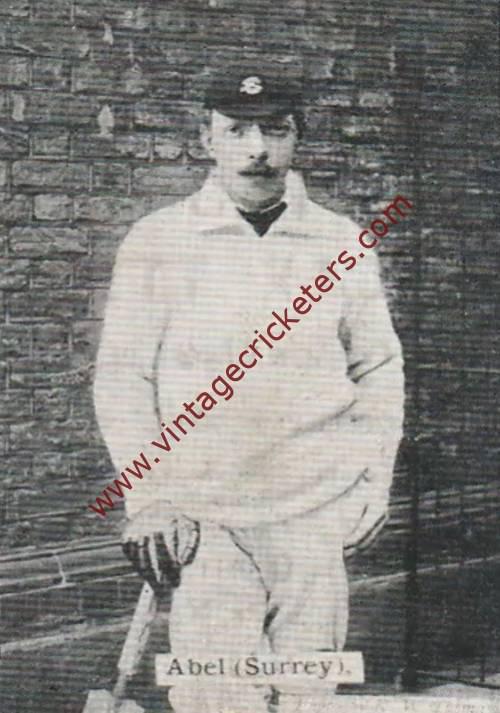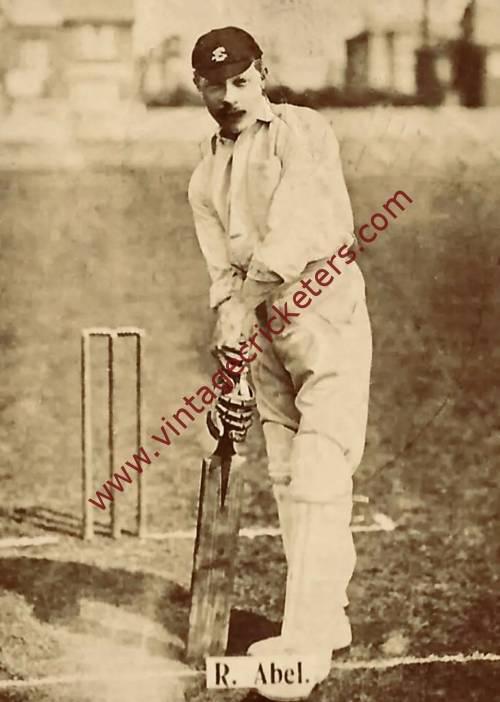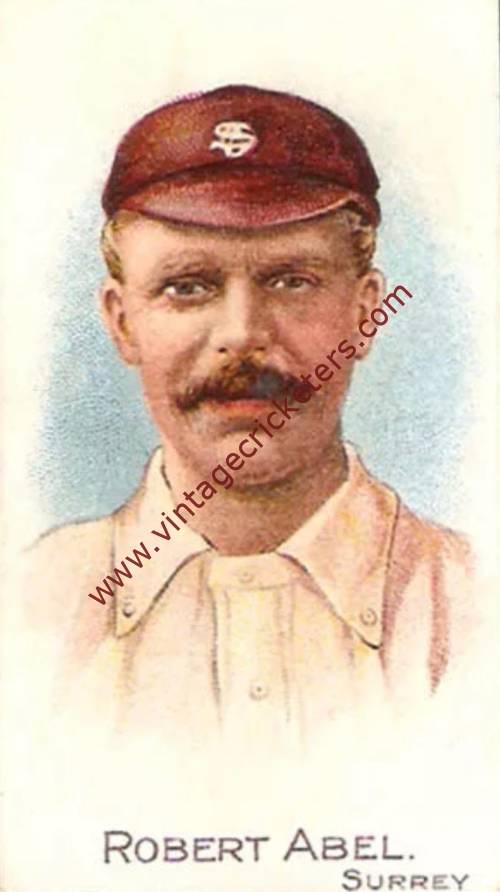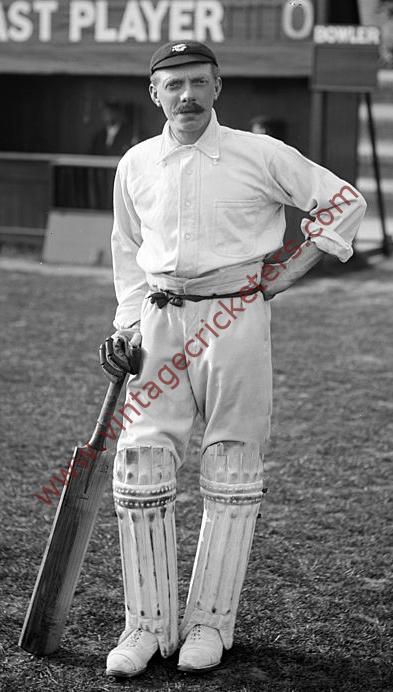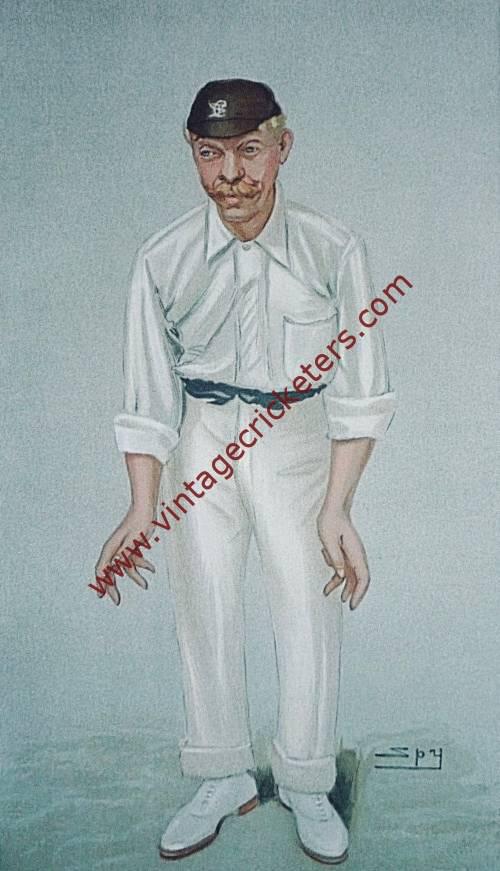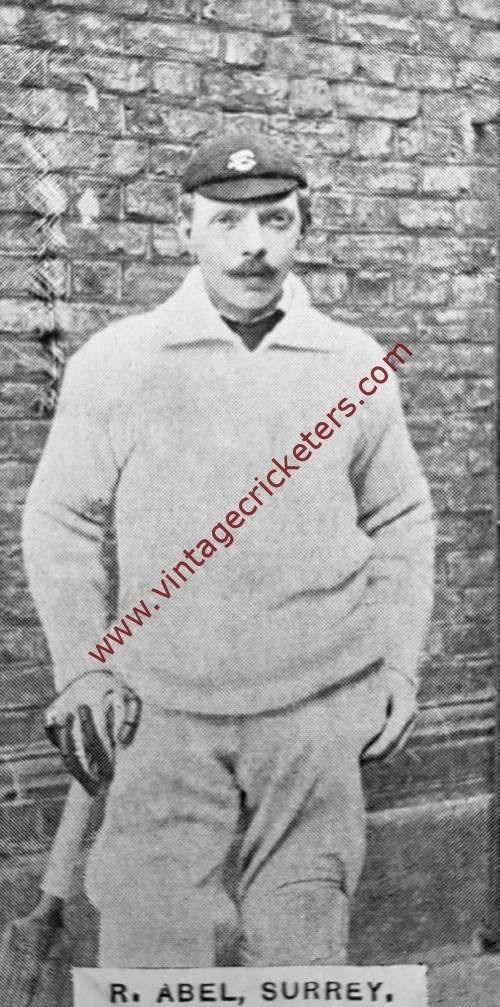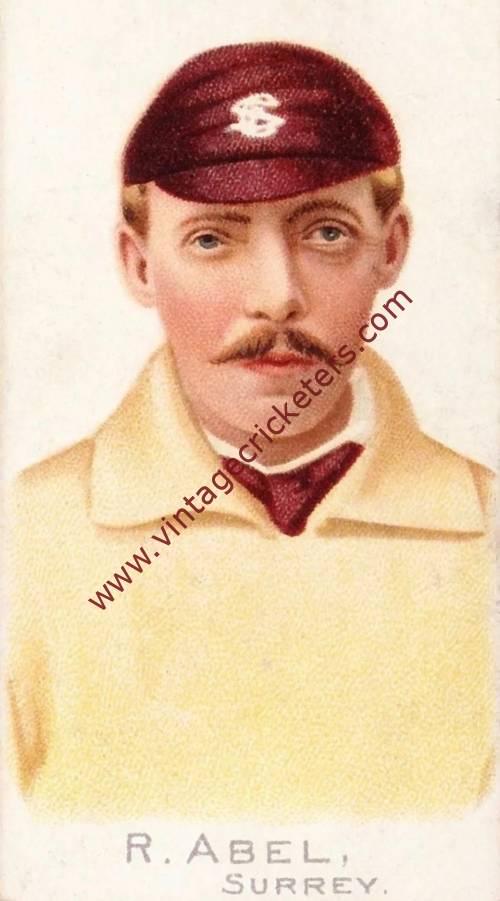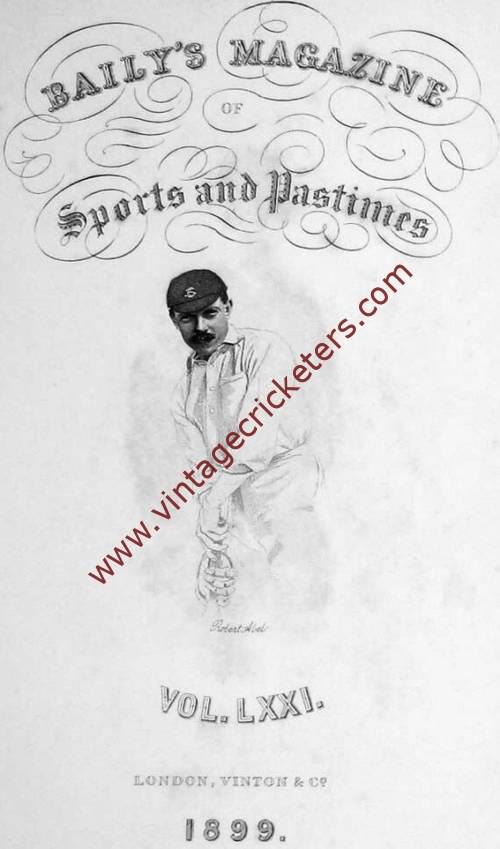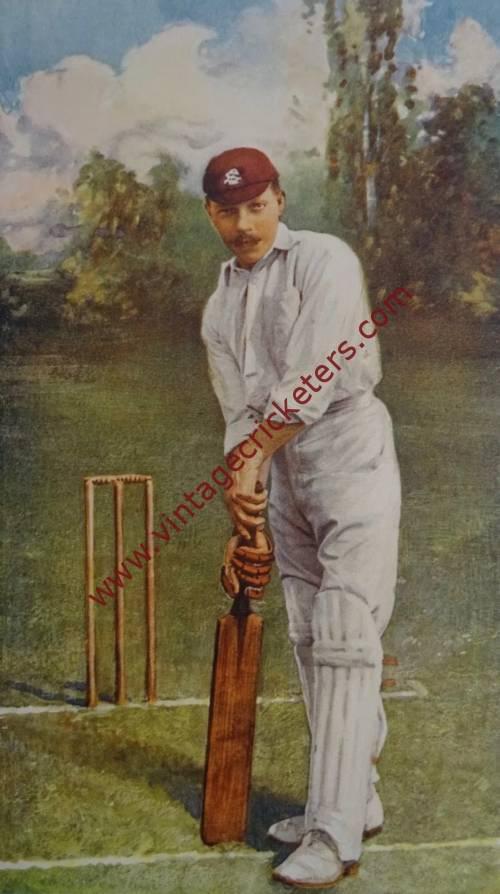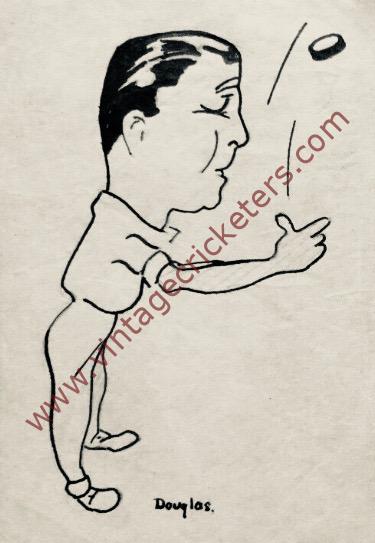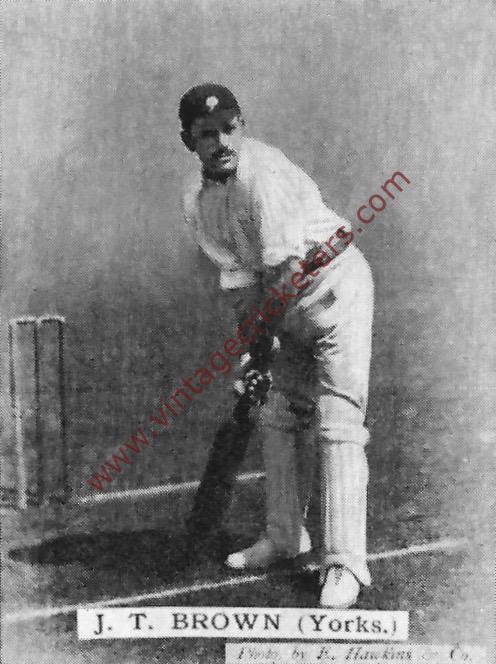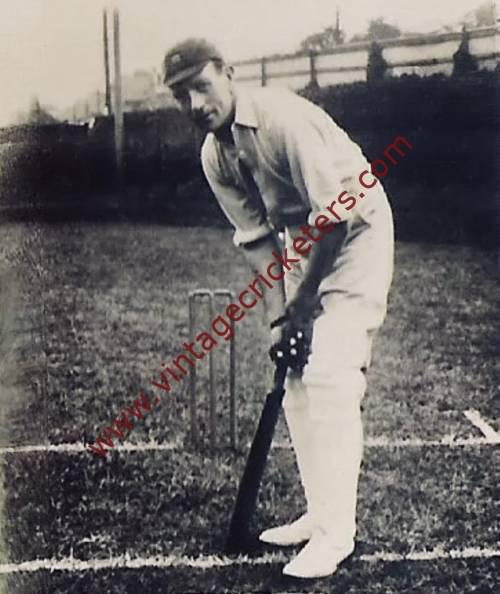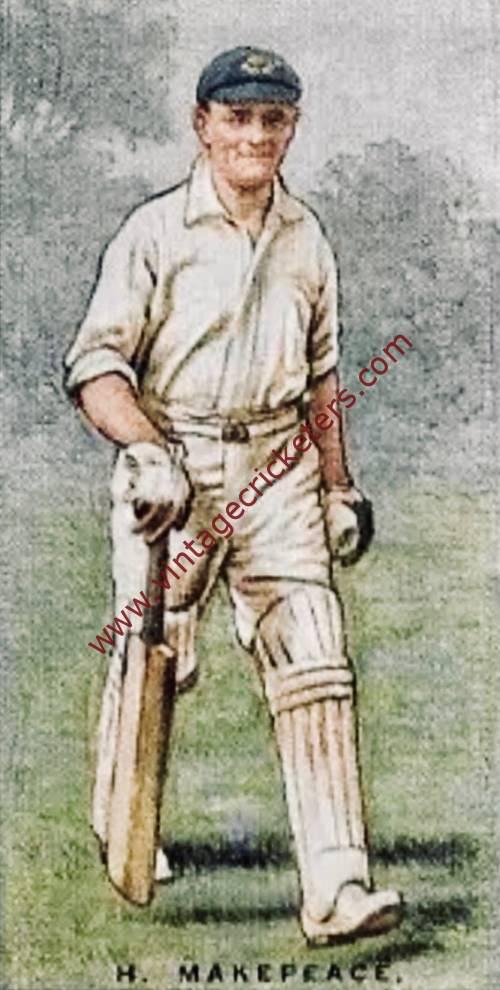Description
Rotherhithe, Surrey born Robert “Bobby” Abel was a Surrey and England opening batsman and a great crowd favourite at The Oval, who was one of the most prolific run getters in the early years of the County Championship. Nicknamed “The Guv’nor”, he was the first England player to “carry his bat” – opening the batting and remaining not out at the end of an innings – through a Test innings when making his highest Test match score of 132 not out at Sydney in January 1892, and the first player to score 2,000 runs in consecutive seasons, which he did each season from 1895 to 1902.
In 1899 for Surrey against Somerset at The Oval, Abel carried his bat through an innings of 811, the highest total for which this feat has been achieved. His 357 not out in that innings remains a Surrey record, and was the highest score made at The Oval until Len Hutton scored 364 in 1938. It remains a Surrey record and is second best for any County, A.C. MacLaren’s 424, also against Somerset at Taunton in 1895, still being the highest. Besides this incredible score, Abel played eight innings of more than 200, and nine times in first class matches he carried his bat through an innings. Among Surrey batsmen of the Vintage Cricketers era he ranks with Hobbs, Hayward, W. W.Read and Harry Jupp.
Abel was physically small, 5 feet 4 inches tall and slimly built. He suffered in the later part of his career from serious vision problems that could have handicapped him against fast bowling; however, his ability to produce eccentric, unorthodox cross-batted strokes, particularly the pull around his legs, complemented with determination and stamina, brought Abel success even on difficult pitches, and made him popular with the public. “He gathers runs like blackberries everywhere he goes” said CB Fry. He possessed great patience, but generally scored quickly, driving and cutting well, but particularly adept at forcing the ball off his legs.
Abel first played for Surrey in 1881, but did not achieve much until 1883. He scored 1,000 runs for the first time in 1886, when he scored 144 against the Australians at The Oval. In 1888 Abel scored 1,323 runs including nine scores over fifty. In that year he played his first Test matches, his debut coming against Australia at Lord’s in July 1888, scoring 70 in England’s victory at The Oval against a side containing the fine bowler Charles Turner. In March 1889, Abel scored 120 in the Test match at Cape Town before England dismissed South Africa for 47 and 43, thus scoring more than the opposition managed in both of their innings.
For the next fourteen years, except for 1893 when he was handicapped by a serious eye infection, Abel was always one of the leading run scorers in England. Despite missing out on Test selection in 1890, Abel returned to his best form in 1891 and played well in Australia the following winter.
In 1895 Abel began to stand out as an exceptional run getter, when he became only the fourth player ever to reach 2,000 runs, including his first double hundred against Essex at The Oval, and he would score at least 2,000 runs for 8 successive seasons through to 1902. Although after 1896 his problematic eyesight made the Test selectors unwilling to choose him, Abel’s accumulation of runs continued to increase: he was the only player to reach 2,000 runs in 1897 and 1898, he scored 2,685 runs in 1899, 2,592 in 1900, and 3,309, the highest aggregate at the time, in 1901, before again scoring 2,000 runs in 1902. Abel also played a record number of first class matches in a season playing 41 matches in 1902.
Abel’s batting on “sticky wickets” in 1902 resulted in a recall from the national selectors for the Sheffield and Old Trafford Test matches, but he managed only four ordinary scores. Injury in 1903 caused the Surrey selection committee to drop him in early July. Even though he was fit again in 1904, Abel reached 50 only six times in 20 matches, and retired to be replaced in the Surrey team by Jack Hobbs.
Once at The Oval he performed the rare feat of scoring a hundred runs between twelve o’clock and lunch time. He and Brockwell enjoyed many big partnerships together for the Surrey first wicket, and against Hampshire at the Oval in August 1897, scored 379, a record for an opening stand at that time, with 265 against Warwickshire at The Oval in September, 1898, 231 against Sussex at The Oval in May, 1897 and 270 (unbroken) against Kent at the Oval in 1900. Other great first wicket stands in which he shared were 364 with D. L. A. Jephson against Derbyshire at The Oval in 1900, 246 with Tom Hayward against Sussex at Hastings in 1902, and 226 with W. G. Grace for South against North at Scarborough in 1889. The biggest partnership of all in which he participated was one of 448 with Hayward for Surrey’s fourth wicket against Yorkshire at the Oval in 1899, Abel scoring 193 and Hayward 273. This was the world’s record for the fourth wicket until 2015.
In a remarkable 23 year career, Abel played 627 first class matches and scored over 33,000 runs at an average of 35.46. He scored 74 centuries and 145 half centuries. Extraordinarily successful in Gentlemen and Players matches at the Oval, he scored 168 not out in 1894, 195 in 1899, 153 not out in 1900, and 247 in 1901. This 247 was the biggest score ever made in a Gentlemen and Players match until 1925, when Hobbs made 266 at Scarborough. For Players against Gentlemen at Lord’s, his highest score was 98 in a memorable match in 1900. Known as an excellent slip fielder, he took 587 catches in the first class game. In his 13 Test matches, he scored two centuries with a highest score of 132 not out, and averaged 37.20. He also bowled right-arm off breaks, and took 263 wickets at a modest 24 a piece, with a best of 6-15, and he managed two further 5 wicket innings.
Two of his sons, William and Thomas, also played for Surrey either side of the First World War.

